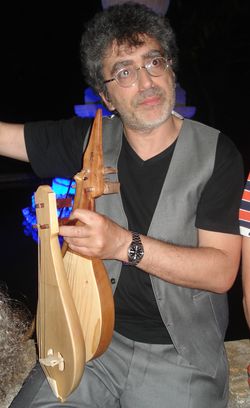Maltese Lira (instrument)
The Maltese lira is a string, bowed instrument
which has maintained its basic physical properties across history. The main characteristics are three strings; tuning pegs fitted perpendicularly to the head; absence of a fingerboard or frets; mobile bridge and soundpost; generally fretted with the back of the nails; held vertically on the knee or between the legs; the body is carved out of a single block of wood with a wooden soundboard; in most cases the tuning is IV-I-V.
There is a red line connecting the instrument all the way from Dalmatia on the Adriatic to Locride in Calabria. One of the most important references to the lira in Malta is by Giovanni Pietro Aguis de Soladnis (1712-1770) published in his Damma tal Kliem Kartaginis mscerred fel fomm tal Maltin u Ghaucin, published around 1759. He states that the lira is a musical instrument introduced to Malta by the Greeks in the beginning of the 18th century and which was very popular amongst the young country folk in Malta and Gozo.
This is not the only reference that links a Maltese folk instrument to the Greek musical tradition. Italian ethnomusicologist Riccardo Leydi notes that the Maltese bagpipe iż-żaqq is very similar to the Aegean tsabuna. Organologist Anthony Baines also claims that an interesting offshoot of the Aegean group of bagpipes exists, or existed in Malta.
